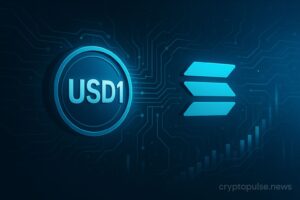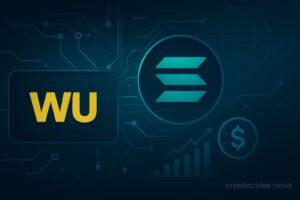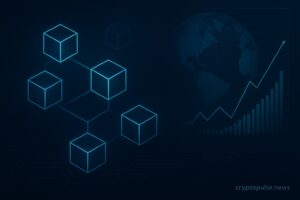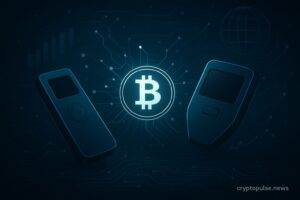OpenSea Eyes Mobile Future with Rally Acquisition
OpenSea acquires mobile-focused Web3 platform Rally to accelerate development of a unified mobile experience for trading NFTs, tokens, and other onchain assets.
In a bold strategic shift, leading NFT marketplace OpenSea has acquired Web3 platform Rally to spearhead its expansion into mobile-first digital asset trading. The deal, announced on July 8, brings Rally’s co-founders into OpenSea’s leadership and signals a future where tokens and NFTs coexist in a seamless, mobile-native environment.
Pushing Toward an ‘Onchain Everything App’
OpenSea’s latest move aims to reimagine how users interact with Web3 assets on mobile devices. With Rally’s co-founder Chris Maddern stepping in as OpenSea’s new Chief Technology Officer, the company is positioning itself to deliver what it describes as an “onchain everything app.”
The envisioned app will enable trading across various digital asset types—NFTs, tokens, and potentially more—all in one integrated mobile platform. According to a post by Maddern on X, the upcoming product will support creators, collectors, and traders, reflecting a more inclusive approach to the onchain economy.
“A completely new OpenSea Mobile experience will be coming in 2025 and will be the best home for crypto on your phone,” Maddern stated.
The acquisition underscores OpenSea’s belief that mobile is the next frontier for Web3 adoption. Maddern emphasized that the majority of user engagement in crypto now happens on mobile, and OpenSea’s existing mobile experience has lagged behind that trend. The company plans to leverage Rally’s expertise to close that gap.
Expanding Beyond NFTs: Tokens as a Key Pillar
The Rally acquisition also highlights a strategic broadening of OpenSea’s focus beyond NFTs. While the company made its name as a top NFT marketplace, it now views fungible tokens as complementary assets that can live alongside NFTs within the same ecosystem.
This pivot is in line with OpenSea’s recent “OS2” platform update, which rolled out in May. OS2 introduced support for fungible token trading—a major step toward a more versatile digital marketplace. It also brought integration with 14 blockchains, including Flow, ApeChain, Sony’s Soneium BSL, and Berachain, significantly expanding the platform’s reach and functionality.
Key features of OS2 include:
- Cross-chain purchase capabilities for buying NFTs across multiple blockchains
- A revamped interface supporting both NFTs and fungible tokens
- Broader infrastructure support for developers and creators
The company claims these enhancements will simplify multi-chain transactions and reduce the technical friction often associated with trading across different networks.
Integrating AI to Enhance User Experience
In addition to its product expansion, OpenSea is also exploring the use of artificial intelligence to improve the platform’s safety and usability. While specifics remain scarce, the company suggested AI would play a role in helping users better navigate the complexities of the crypto ecosystem.
This aligns with a broader industry trend, where AI is being increasingly deployed to detect scams, enhance personalization, and guide users through asset discovery and management.
Navigating a Collapsing NFT Market
OpenSea’s forward-looking strategy comes at a time when the NFT sector is experiencing a sharp downturn. According to DappRadar, NFT sales volume fell to $823 million in Q2 2025, marking an 18-month low. The figure represents a staggering decline from the $4 billion recorded a year earlier.
Key takeaways from the latest data:
- Q2 2025 saw a 19% drop from Q1, the fifth straight quarterly decline
- 2025 is shaping up to be the worst year on record for NFTs
- Leading collections, including Bored Ape Yacht Club, have seen dramatic valuation drops
- Activity has plummeted on major marketplaces such as OpenSea, LooksRare, and Blur
The decline has been attributed to several factors, including fading retail interest, persistent high Ethereum gas fees, and a drop in media coverage. Even high-profile launches, such as NFT drops from U.S. President Donald Trump, have offered only temporary relief from the market’s broader malaise.
Many celebrity-backed projects that once dominated headlines have since gone silent, disappeared, or been revealed as scams—damaging public trust and investor sentiment alike.
Positioning for the Next Cycle
Despite the slump, OpenSea appears to be preparing for a rebound in digital asset engagement, with its focus shifting toward a more accessible, multi-asset mobile platform that supports both new and seasoned Web3 users.
The Rally acquisition, OS2 upgrades, and potential AI features all point to a company that’s evolving beyond its NFT roots in response to shifting user behaviors and market conditions. By embracing tokens, enhancing multi-chain support, and doubling down on mobile, OpenSea is laying the groundwork for a more resilient and diversified Web3 platform.
As the NFT market recalibrates and user expectations evolve, OpenSea’s mobile-first, all-in-one approach could position it ahead of competitors struggling to adapt to the current climate. Whether this strategy will be enough to reignite user interest remains to be seen—but it may set the standard for what the next generation of crypto marketplaces will look like.








